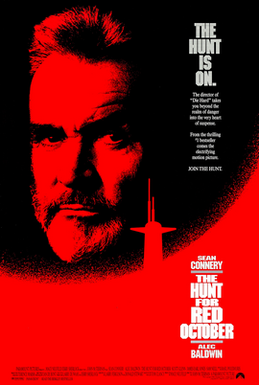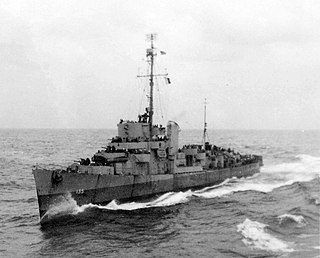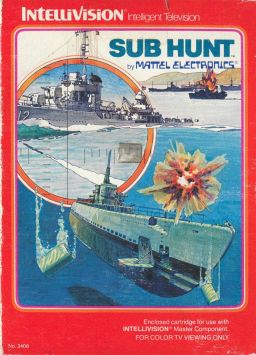
The Los Angeles class of submarines are nuclear-powered fast attack submarines (SSN) in service with the United States Navy. Also known as the 688 class after the hull number of lead vessel USS Los Angeles (SSN-688), 62 were built from 1972 to 1996, the latter 23 to an improved 688i standard. As of 2024, 24 of the Los Angeles class remain in commission—more than any other class in the world—and they account for almost half of the U.S. Navy's 50 fast attack submarines.

A submarine is a watercraft capable of independent operation underwater. The term "submarine" is also sometimes used historically or informally to refer to remotely operated vehicles and robots, or to medium-sized or smaller vessels. Submarines are referred to as boats rather than ships regardless of their size.
The Seawolf class is a class of nuclear-powered, fast attack submarines (SSN) in service with the United States Navy. The class was the intended successor to the Los Angeles class, and design work began in 1983. A fleet of 29 submarines was to be built over a ten-year period, but that was reduced to 12 submarines. The end of the Cold War and budget constraints led to the cancellation of any further additions to the fleet in 1995, leaving the Seawolf class limited to just three boats. This, in turn, led to the design of the smaller Virginia class. The Seawolf class cost about $3 billion per unit, making it the most expensive United States Navy fast attack submarine and second most expensive submarine ever, after the French Triomphant-class nuclear-powered ballistic missile submarines.

USS Underhill (DE-682) was a Buckley-class destroyer escort of the United States Navy during World War II. Built in 1943, she served in the Atlantic, the Mediterranean, and the Pacific until her sinking in a suicide attack by a Japanese Kaiten manned torpedo on 24 July 1945.

The submarine film is a subgenre of war film in which most of the plot revolves around a submarine below the ocean's surface. Films of this subgenre typically focus on a small but determined crew of submariners battling against enemy submarines or submarine-hunter ships, or against other problems ranging from disputes amongst the crew, threats of mutiny, life-threatening mechanical breakdowns, or the daily difficulties of living on a submarine.

The Victor class, Soviet designations Project 671 Yorsh, Project 671RT Syomga and Project 671RTM/RTMK Shchuka,, are series of nuclear-powered attack submarines built in the Soviet Union and operated by the Soviet Navy. Since the 1960s, 48 units were built in total, of which the last remaining are currently in service with the Russian Navy. The Victor-class submarines featured a teardrop shape, allowing them to travel at high speed. These vessels were primarily designed to protect Soviet surface fleets and to attack American ballistic missile submarines. Project 671 began in 1959 with the design task assigned to SKB-143.

The Akula class, Soviet designation Project 971 Shchuka-B is a series of fourth generation nuclear-powered attack submarines (SSNs) first deployed by the Soviet Navy in 1986. There are four sub-classes or flights of Shchuka-B, consisting of the original seven Project 971 boats, commissioned between 1984 and 1990; six Project 971Is, commissioned between 1991 and 2009; one Project 971U, commissioned in 1995; and one Project 971M, commissioned in 2001. The Russians call all of the submarines Shchuka-B, regardless of modifications.

Down Periscope is a 1996 American military comedy submarine film directed by David S. Ward, produced by Robert Lawrence, and starring Kelsey Grammer, Lauren Holly, and Rob Schneider along with Bruce Dern, Harry Dean Stanton, William H. Macy, and Rip Torn in supporting roles. Released by 20th Century Fox on March 1, 1996, the film focuses on Lieutenant Commander Thomas Dodge, a capable U.S. Navy officer who fights to save his career after being saddled with a group of misfit seamen who have been brought together as the crew of his first command, USS Stingray, a rusty, obsolete World War II-era diesel submarine that is the focus of a special naval war game, supervised by a bitter rival who is fighting to bury Dodge's career by any means necessary.

SSN is a techno-thriller novel, created by Tom Clancy and Martin H. Greenberg and published on December 1, 1996, as a tie-in to the video game of the same name. It follows the missions of USS Cheyenne, a United States Navy nuclear attack submarine, during a fictional war between the United States and China over the Spratly Islands. SSN is the second Clancy novel after Red Storm Rising (1986) that is not set in the Ryanverse.

The Bedford Incident is a 1965 British-American Cold War film directed by James B. Harris, starring Richard Widmark and Sidney Poitier, and produced by Harris and Widmark. The cast also features Eric Portman, James MacArthur, Martin Balsam, and Wally Cox, as well as early appearances by Donald Sutherland and Ed Bishop. James Poe adapted Mark Rascovich's 1963 novel of the same name, which borrowed from the plot of Herman Melville's Moby-Dick; at one point in the film, the captain is advised he is "not chasing whales now".

USS B-3 (SS-12) was one of three B-class submarines built for the United States Navy in the first decade of the 20th century.

The Hunt for Red October is a 1990 American submarine spy thriller film directed by John McTiernan, produced by Mace Neufeld, and starring Sean Connery, Alec Baldwin, Scott Glenn, James Earl Jones, and Sam Neill. The film is an adaptation of Tom Clancy's 1984 bestselling novel of the same name. It is the first installment of the film series with the protagonist Jack Ryan.

Tom Clancy's SSN is a 1996 submarine simulator of the 688i released on Microsoft Windows. The player is in command of USS Cheyenne in a limited war against China over the Spratly Islands. The gameplay is limited to a 15-mission single-player campaign in which the player carries out anti-submarine, anti-surface ship roles, intelligence gathering activities, and the launch of submarine based cruise missiles. Tom Clancy also wrote a book by the same name as a tie-in.

USS Neal A. Scott (DE-769) was a Cannon-class destroyer escort in service with the United States Navy from 1944 to 1946. She was sold for scrapping in 1969.

USS Flaherty (DE-135) was an Edsall-class destroyer escort in service with the United States Navy from 1943 to 1946. She was sold for scrap in 1966.
To Kill the Potemkin (ISBN 978-0917657801) is a novel by Mark Joseph originally published in 1986. As a paperback, it spent four weeks on The New York Times bestseller list in July and August 1987.

USS Varian (DE-798) was a Buckley-class destroyer escort of the United States Navy.

Sub Hunt is a submarine simulator video game released by Mattel for its Intellivision video game system in 1982. Players take control of a wolfpack of submarines attempting to stop an enemy invasion.

The action of 24 July 1945 was one of the final naval battles during the Pacific Theater of World War II. In an attempt to destroy as many allied ships as possible, the Imperial Japanese Navy began arming their submarine fleet with manned torpedoes called kaitens. The Action of 24 July 1945 concerns the battle between a convoy of U.S. Navy warships off Luzon and the Japanese submarine I-53 and her kaitens.

Run Silent, Run Deep is a 1958 American black-and-white war film starring Clark Gable and Burt Lancaster, based on the 1955 novel of the same name by Commander Edward L. Beach Jr. The picture was directed by Robert Wise and produced by Harold Hecht. The title refers to "silent running", a submarine stealth tactic. The story describes World War II submarine warfare in the Pacific Ocean, and deals with themes of vengeance, endurance, courage, loyalty, and honor, and how these can be tested during wartime.
















